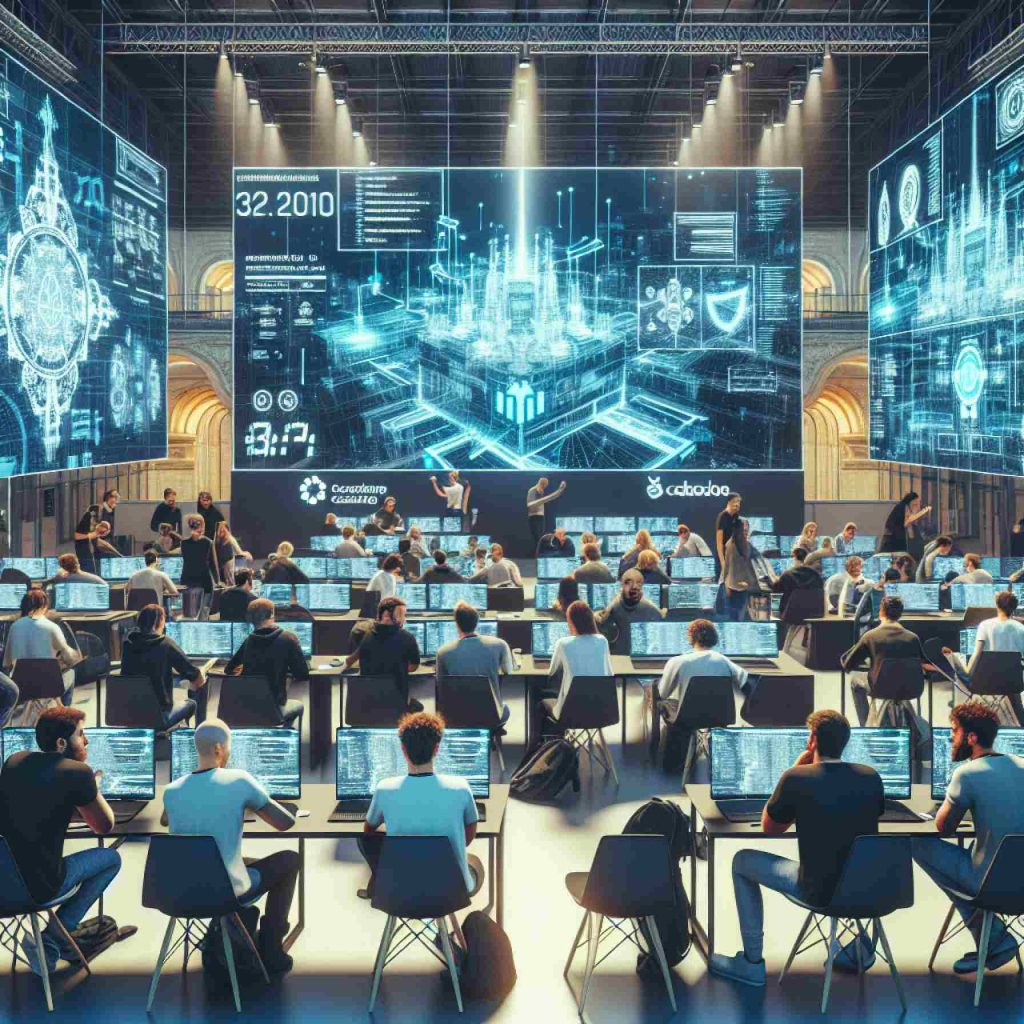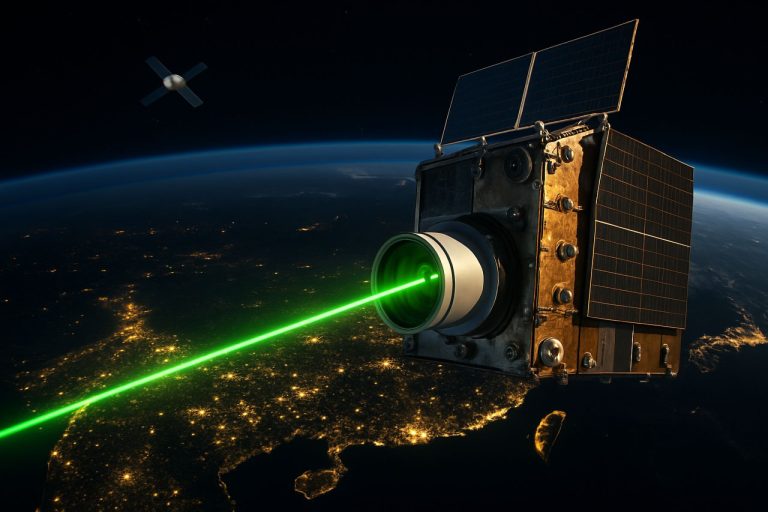
- The Qubic 2025 Hackathon in Madrid showcased the confluence of artificial intelligence and blockchain technology through global developer competition.
- French team QuLang, guided by the Frekaz Group, strived to build a decentralized marketplace for direct AI model provider-user interaction.
- QuLang utilized Qubic’s smart contract capabilities to facilitate secure and swift AI engagements, fostering a seamless ecosystem.
- Despite intense competition and fatigue, QuLang’s clear and compelling presentation impressed judges, securing them third place.
- The event highlighted a shift towards decentralized paradigms, emphasizing innovation, vision, and determination in technological advancement.
- QuLang’s journey exemplifies the potential for AI and blockchain symbiosis, inspiring future breakthroughs in this rapidly evolving tech landscape.
A dimly lit auditorium in Madrid hummed with energy as the Qubic 2025 Hackathon unfolded, a frenetic testament to human ingenuity at the crossroads of artificial intelligence and blockchain technology. The stage was set for a dramatic 48-hour showdown, where developers from across the globe converged for a test of skill, strategy, and sheer endurance.
Amid this technological battleground, the French team, QuLang, emerged as a formidable contender, buoyed by the strategic oversight of the Frekaz Group. As laptops clattered away, team members huddled over screens, faces aglow with the determined glare of visionary ambition. Their mission was to forge an unprecedented platform—a decentralized marketplace where AI model providers meet a global audience directly, cutting out the digital behemoths that typically stand between innovation and users.
QuLang’s approach was a bold gambit. Utilizing Qubic’s pioneering smart contract capabilities, they aimed to create a seamless ecosystem enabling swift and secure engagements between AI providers and seekers. The hackathon’s playground was the Qubic testnet, a frontier of possibilities where rapid prototyping was not just encouraged but essential.
Hour by hour, the air in the auditorium thickened with the palpable tension of technological creation. As sleep became a distant memory, the French team kept their focus laser-sharp, guided by a core philosophy: understand, build, iterate. Ideas were abundant, but time was scarce, forcing every decision through the sieve of practicality.
Then came a pivotal moment: the presentation. Under the bright lights, fatigued yet fervent, QuLang delivered their pitch with a clarity that pierced through exhaustion. Their compelling narrative of an integrated future where AI and blockchain coexist not just peacefully but symbiotically, won the crowd and the judges alike.
When the dust settled, QuLang had secured a prestigious third place, a triumph echoing far beyond the walls of the hackathon. It marked a rising tide, signaling France’s robust foray into the tech landscape where AI meets blockchain.
This event in Madrid was more than a showcase of technical prowess; it was a testimony to the human spirit’s unyielding drive to innovate. As digital frontiers expand, the imagination continues to unearth new realms of possibility—and QuLang’s journey is a beacon pointing toward that horizon.
In a world rapidly shifting towards decentralized paradigms, this hackathon not only set the stage for breakthrough technologies but also solidified the roles of those daring enough to venture into the unknown. QuLang’s story serves as an inspiration to all, proving that with vision and determination, the future belongs to those who can dream it into reality.
The Hidden Impact of AI and Blockchain: Insights from the Qubic 2025 Hackathon
Insights and Key Takeaways from the Qubic 2025 Hackathon
The Qubic 2025 Hackathon in Madrid wasn’t just a competition; it was a glimpse into the future of technology where blockchain and AI seamlessly blend. Here are some additional insights and facts that were not fully explored in the original account:
The Power of Decentralized Marketplaces
1. Deconstructing Middlemen: At the heart of QuLang’s project was the elimination of intermediaries in AI distribution. This directly challenges current market leaders who often control the pipeline from innovation to user, reminiscent of platforms like Apple’s App Store or Google’s Play Store. By providing direct peer-to-peer interactions via blockchain, users could potentially save on costs while receiving customized AI solutions.
2. Privacy and Control: Utilizing blockchain for decentralized marketplaces also promises enhanced user privacy. By adopting Qubic’s smart contracts, QuLang ensured that transactions between AI providers and users were secure and transparent, reducing the risk of data breaches—a growing concern amid increased data-centric AI applications.
Leveraging AI and Blockchain for Future Growth
3. Real-World Use Cases: QuLang’s project can be applied across various industries. For instance, healthcare providers could use their platform to access bespoke AI tools for patient diagnosis, while financial firms might streamline fraud detection with custom AI applications—all while maintaining sovereignty over their data.
4. Market Forecasts & Industry Trends: The fusion of AI and blockchain is anticipated to grow rapidly as the global blockchain in the AI market could reach $1.5 billion by 2030, driven by increasing demand for AI models and transparency in transactions (source: Markets and Markets).
Features, Specifications, and Pricing
5. Qubic’s Testnet Capabilities: The Qubic testnet provided a robust environment for rapid prototyping. It offers flexibility for developers to deploy smart contracts with minimal overhead, ensuring that iterative improvements can be swiftly integrated during events like hackathons.
6. Pricing Structures for End Users: By removing intermediaries, platforms like QuLang’s project could introduce more competitive pricing strategies, giving users versatile subscription models or pay-per-use plans that better suit their needs.
Challenges and Controversies
7. Interoperability Issues: Despite the promising aspects of AI-blockchain integration, there’s a looming challenge concerning interoperability between different blockchain networks, which might hinder seamless transactions between distinct ecosystems.
8. Regulatory Hurdles: As with all blockchain projects, the ever-changing regulatory environment poses a significant challenge. Governments worldwide are still grappling with how to regulate blockchain transactions without stifling innovation.
Actionable Steps and Quick Tips
– Stay Informed and Adaptive: As a developer or tech enthusiast, ensure you keep up-to-date with the latest AI and blockchain advancements. Consider participating in hackathons to network and test your skills in a competitive environment.
– Explore Decentralized Tools: For businesses, exploring decentralized tools can yield cost efficiencies and innovation. Start small by integrating blockchain for specific business operations before scaling.
Conclusion
The Qubic 2025 Hackathon showcased the boundless possibilities of merging AI with blockchain technology. As innovations like QuLang’s decentralized marketplace emerge, they not only disrupt existing frameworks but also pave the way for a more open and transparent digital future. To keep pace with such advancements, individuals and enterprises should embrace a mindset of continuous learning and proactive adaptation.
For more insights on the intersection of AI and blockchain, visit IBM or Microsoft.



